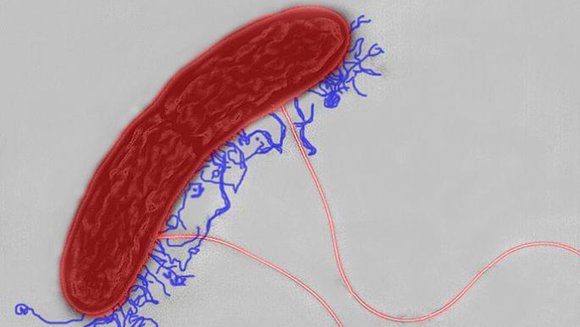Connections
In nature, certain types of bacteria use tiny hair-like structures on their cell walls, called pili, to create electrical connections with other microbes or minerals. This form of interaction is extremely efficient and fast. Now, researchers at UMass have discovered that these bacterial nanothreads also lend themselves perfectly for the production of conductive materials, electronic devices and sensors for use in the medical and environmental industries.
Mud
Taking a group of Geobacter bacteria, the microbiologists looked for the pili with the highest conductivity. As it turned out, the divergence between different types of bacteria is huge. The pili of a Geobacter metallireducens that UMass researchers had fished out of the Potomac River (US) 30 years earlier, for example, are a million more conductive than those of G. uraniireducens. The team isolated the responsible gene in G. metallireducens and used it to generate nanothreads that were then implanted in a model species (G. sulfurreducens), giving them a method for the controlled production of G. metallireducens' superconductive threads.

Geobacter sulfurreducens with superconductive pili (shown blue).
Revolutionary
The microbial nanothreads are a revolutionary electronic material that offers many advantages over synthetic materials. To begin with, the manufacture of synthetic materials relies on toxic chemicals, high temperatures and costly metals. It also uses lots of energy. By contrast, mass production of natural microbial nanothreads requires little energy and can be carried out at room temperature in bioreactors fuelled by renewable organic resources. That means the end product is totally toxin free.
Bacterial smartphone
By isolating various naturally occurring ‘nano genes’ and implanting them in a model species, a single organism can be used to produce a diverse range of nanothreads. According to the researchers, this technique may open the way for science to more easily and rapidly unearth new electronic materials in the micro-world. Beyond that, they hope that in future it will become possible to produce even better nanomaterials using genes they design themselves. Who knows, maybe one day we'll be able to call and app using bacterial smartphones!
